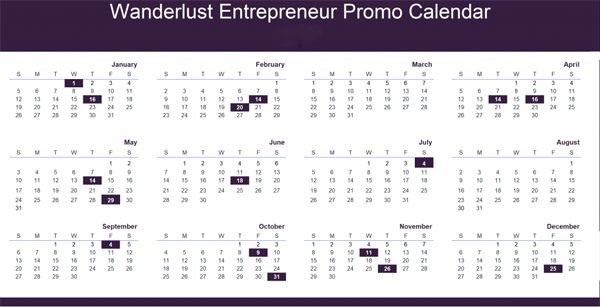Pricing is never fun, but when you’re planning a transformational destination retreat, getting it right is crucial to your success. That’s because pricing is one of the easiest ways to get into a mess and lose money.
When you plug in your budget numbers, you don’t want to suddenly realize you ended up doing all that work for free. Or even worse, that you lost money! Your goal is to set the right price and make money.
So use these tried-and-true strategies to avoid the four missteps.
1. Don’t forget your own costs
Including your expenses in the price is the most important factor in your pricing. Too many retreat leaders forget to include their costs in the price of the retreat, leaving them on the hook for their own lodging and flights.
Are you arriving early to get prepared and ward off flight delays? Add those costs, too.
And carefully review your budget for other costs you’ll rack up: insurance, marketing to promote the retreat, on-site cash tips, workbooks and handouts, gift bags for clients — the list goes on.
If you incur an expense of planning or executing the retreat, factor it into your pricing. Then calculate the final retreat price by dividing all the costs by the number of participants.
2- Be realistic about attendance
The number of attendees affects almost every aspect of your costs. Not only are you dividing your personal retreat planning and management expenses among each participant, but the facility and hotel rates may depend on your headcount, too.
Here’s a common scenario that happens all too often. Your retreat location has offered a free room and board package for the facilitator (you) if you book 10 rooms.
But only six people purchase your retreat.
Now you have to pay for your own room and board package, and you have four fewer people to provide income — a huge blow to your profitability. Add in the transportation, food, advertising and other costs you originally allocated among 10 participants, and your profit disappears.
So always set your price based on the lowest possible number of attendees.
And know which costs fluctuate based on the number of participants. You can choose to charge $50 per person for an excursion that costs you $250, no matter how many attendees partake. So you need at least five people participate to break even on the excursion, but if eight sign up, you make a profit.
Calculate different pricing scenarios to see how many people you need to register to be profitable. Know what your expenses will look like whether you have six attendees or 20.
3- Understand your biggest costs
Lodging and meals are often the heftiest expenses in your pricing. So make sure you understand how those costs work.
Whether you’re working with a dedicated retreat facility or a boutique hotel, learn what’s included in the room and board package. Gratuities, taxes, resort fees and meals can all vary. Tiered pricing — where costs go down when the number of people increases — can further complicate package pricing.
For example, some facilities offer a free package for the retreat facilitator while others just comp a room. Know the specifics of your rate. That free room might also depend on the number of people registered or the number of rooms filled.
There’s a small, but important difference between the two. The latter depends on whether your participants choose double or single occupancy. But that’s something you won’t know until each client books.
Food can either be highly detailed or fairly streamlined. So decide which meals to include and where to have them.
If you’re holding a retreat in the exotic sand dunes of Oman where your clients have limited transportation, taking meals and snacks in your facility makes sense. But if your retreat is in the middle of Tulum, Mexico with local eateries aplenty, serving three group meals every day could stifle clients who want to explore local food culture.
If you plan to visit a special restaurant as a group, call in advance to set a fixed price menu. Add the cost, including tips and soft drinks, to your price per person.
And don’t forget you need to eat, too! Add up your meal costs and divide them among participants.
4- Marketing your retreat price
Once you’ve calculated your retreat costs, decide how to market your retreat price.
There are two ways to show your price to potential clients. With all-inclusive pricing, you display one lump sum that includes room and board, event fee and your expenses, divided among all participants.
All-inclusive doesn’t necessarily mean that everything is covered. You can still charge for optional services like massages, meals, alcohol or special excursions, as long as you clearly state what’s included.
You may also want to separate the event fee. The problem you may run into, though, is that number can look suspiciously high to your clients. And that’s because you’ll have to include your expenses and your net right in the event fee.
To your clients, separate pricing looks like this: Hotel and meals: $1,300; Retreat fee: $1,279. The retreat fee is almost as much as room and board. Or, you could market the same retreat as: All-inclusive 6-day retreat: $2,579.
The latter option is usually more enticing. You know what your clients want, but all-inclusive pricing is easier for both you and them. Clients won’t know exactly how much of that lump sum is dedicated to accommodations, food or your fees. But they’ll know their total cost up front.
Regardless of how you choose to market your retreat price, your profit will always depend on how many participants you register. And that means your retreat marketing plan needs to be ready to go.
If you’re feeling perplexed by complicated retreat pricing and you’re ready to make a SERIOUS profit on your retreats, consider taking your retreat education to the next level by joining us in the Retreat Blueprint Program where you will learn how to PROPERLY plan, price, promote and monetize your transformational retreats.
To your wanderlust life, Sheri

Through her Wanderlust Entrepreneur Community and her signature course, The Retreat Blueprint Program, she has taught thousands of facilitators how to design exceptional retreats that allow them stand out in their niche. She is famous for helping clients plan, fill, and profit from transformational retreats that change lives in a huge way while adding serious income to their bottom line!




I am looking to open up a retreat for targeted parents and alienated children. This is more for parental alienation victims, child abuse, and mental health issues due to this intimate domestic violence, im looking to build a safe house and empower these individuals to live their life and follow their journeys, with or without their children. Can you help with a budget or business plan?
Tamara this is a wonderful way to serve parents – but before you dive into this I would look very carefully into the laws in your area as what you are creating (a safe house) is more than just a retreat. Because this is not what we would consider a retreat per se – I don’t feel that we are the people to assist you. However I commend you in what you are doing – never stop angel.
Wishing you all the best of luck in your philanthropic endeavors Tamara. I can relate to the call of hosting such necessary retreats ♡
im looking to do a pop up space for an actual space i plan on opening soon. Its more like a co working space for a niche community and it will incorporate women empowerment, financial literacy money management etc however it will be a 3 day retreat/ pop up does this make sense financially since i will be opening up a space within months of the pop ups, i do not have a loan.
Hi Brittany!
I cannot say what is financially possible angel. You need to create a business plan for your event and lay out all the possible costs. Then you can determine if this is something you want to do or can do. xox
I want to buy an existing hunting retreat (with horses and maybe cattle). I would like to do corporate, church and private retreats. I have done numerous small retreats at rented locations, but I want to live at the location. Two of my sons want to run it with me. I am not sure where to start. We are looking at Colorado, Idaho or Montana.
Hello! Thank you for this. I’m planning on for next summer in Croatia, and I’m wondering about health insurance and other things I may forget about? Also, do we have attendees sign a contract? How many payments are recommended?
Hi Ivana! Glad you are thinking about these issues ahead of time – that is very wise! I highly recommend you listen in to our “5 Steps To Creating Your 5 Figure Retreat!” here: https://www.wanderlustentrepreneur.com/online-webinar-trainings/
In this training we talk about what items should be part of your pricing as well as legal issues – like having them sign legal forms and more. I think you will get a lot out of it!